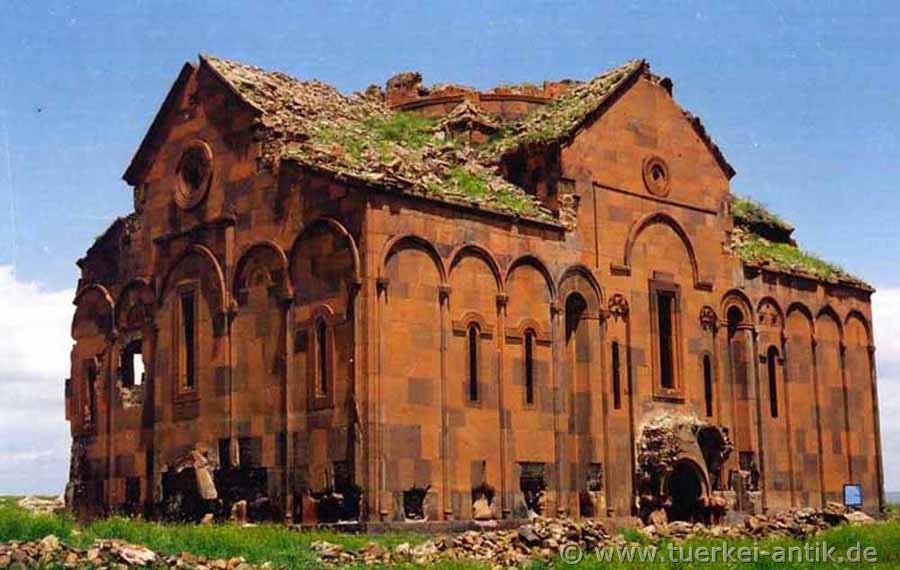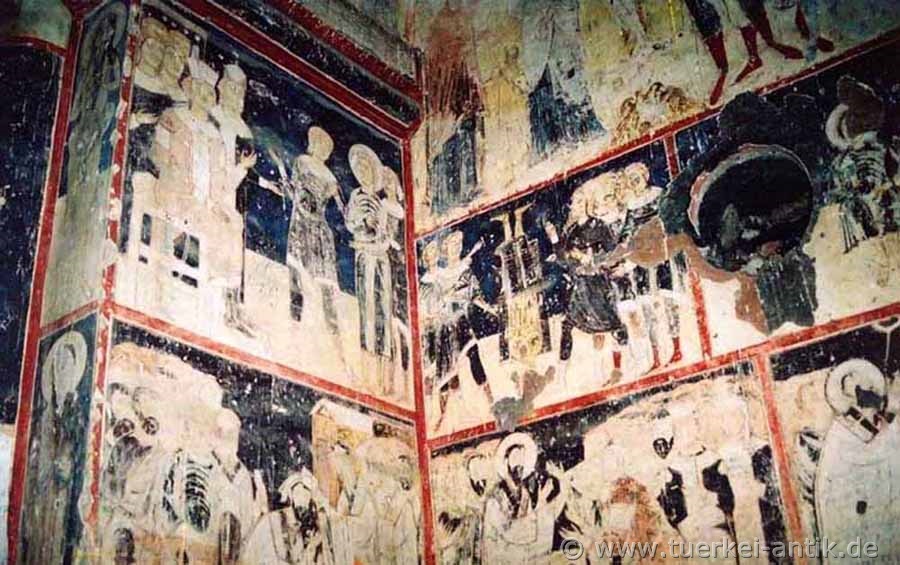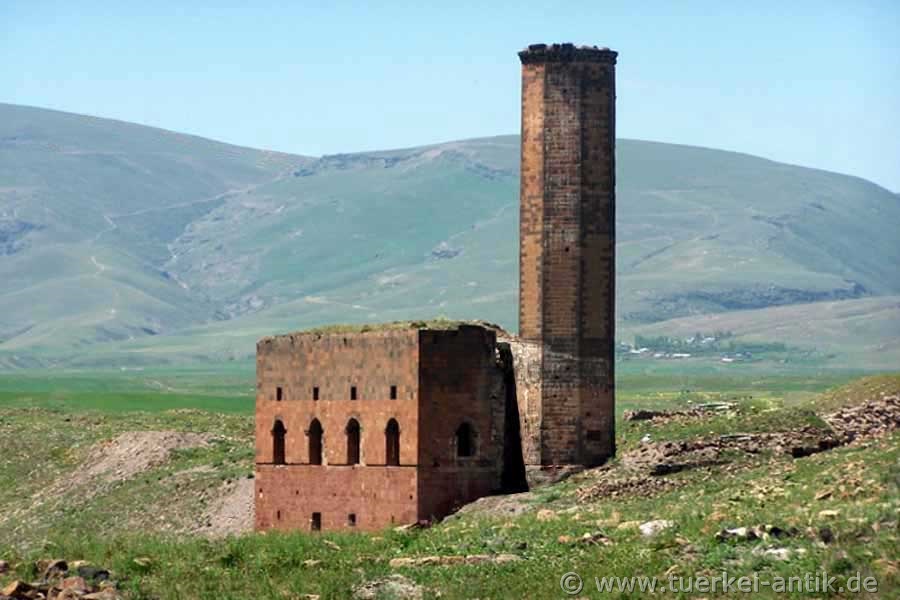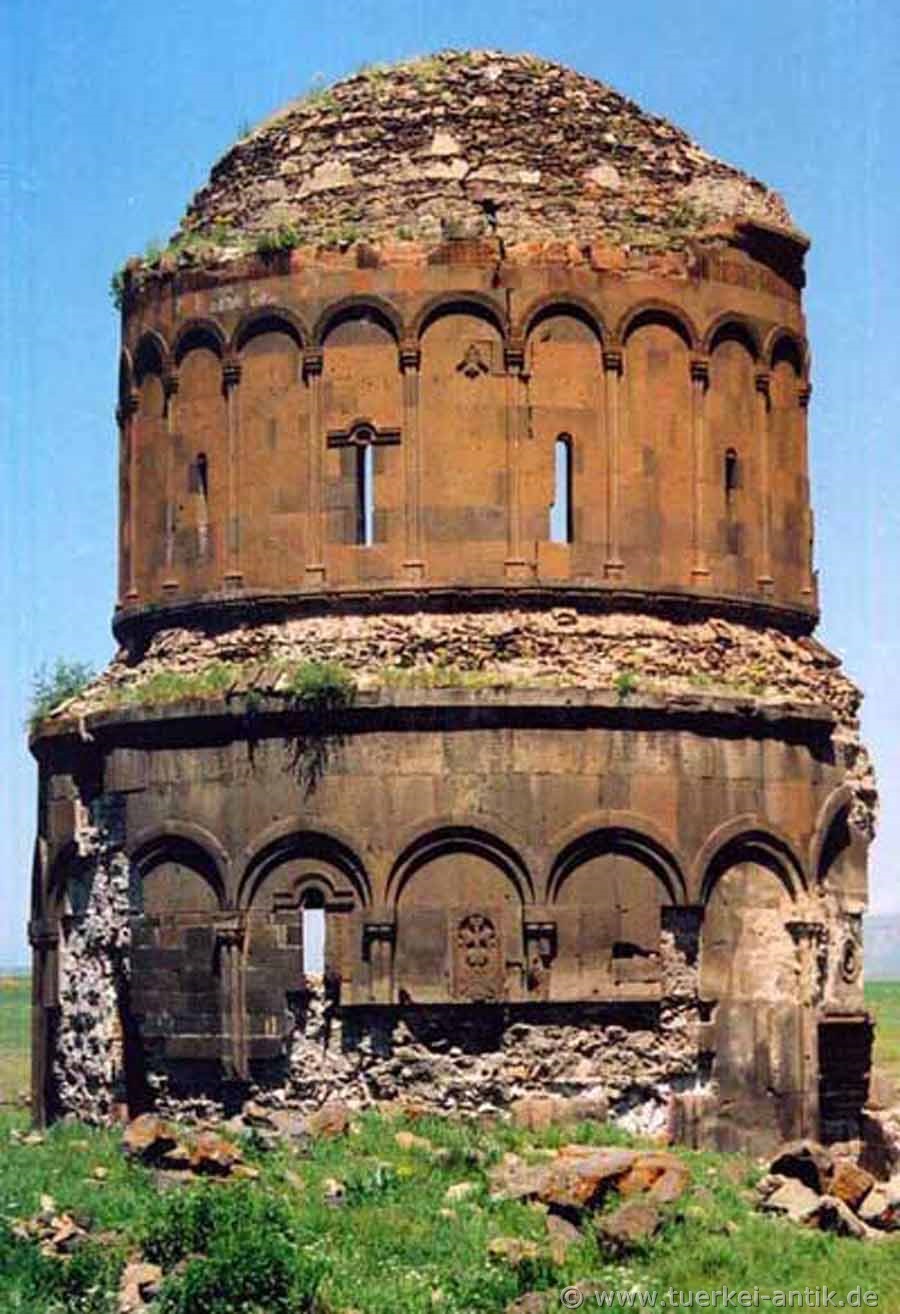 |
| Ani in Bithynia et Pontus | |||
|
|
|
||
| The renovated north gate | |||
|
Ani has been documented as an Armenian fortress since the 5th century. In the 10th century it developed into an important city. King Ascot III Bagratuni (951-977) made Ani the capital of his Armenian kingdom in 961. When the city was given to the Byzantines in 1045, it was widely known as the "City of 1001 Churches" and had more than 100,000 inhabitants. The largest church was the Cathedral of Ani, built between 989 and 1001 by the architect Trdat for the Armenian patriarch who moved to Ani. |
|||
 |
|||
| The Cathedral | |||
|
In 1064 Ani was conquered by the Seljuks, which brought it under Islamic rule. At the end of the 12th century the city fell to the Christian Kingdom of Georgia. The Georgians used the Armenian Zakarids as vassals in Ani, under which the city experienced a last short period of prosperity. A siege by the Mongols could be fought back in 1226.
|
|||
|
|
|||
| In the cathedral of Ani | |||
|
|
|||
| The Menuçehr Mosque, the first Seljuk mosque in Anatolia | |||
|
Today Ani is a ghost town and is known above all for the preserved testimonies of Armenian architecture. The only "inhabitants" are Turkish border guards, isolated tourists and residents of the neighbouring Turkish village of Ocakli.
|
|||
|
|
|||
|
The Church of the Redeemer (today a hollow semicircle) |
|||
|
|
|||
|
In the past, access to the city was partly only possible with permission, since the area was a military restricted area for a long time. Due to the location directly on the border to Armenia, photography was partially prohibited, and some parts of the area were not accessible to civilians. In the course of the tourist development, the largest parts of the city were made freely accessible. Only the citadel (Turkish: Iç Kale) and the immediate border strip are still a military restricted area and may not be entered. Several former monasteries around Ani and in the Armenian province of Shirak, including Chtsgonk, Marmaschen and Horomos, are stylistically attributed to the architectural "style of Ani" of the 11th century. From 2012 Ani was on the tentative list for inclusion as a UNESCO World Heritage Site. In 2016, the city was declared a World Heritage Site. |
|||
| Photos: @chim | |||
| Translation aid: www.DeepL.com/Translator | |||
| Source: Wikipedia and others | |||
|
|
|||




